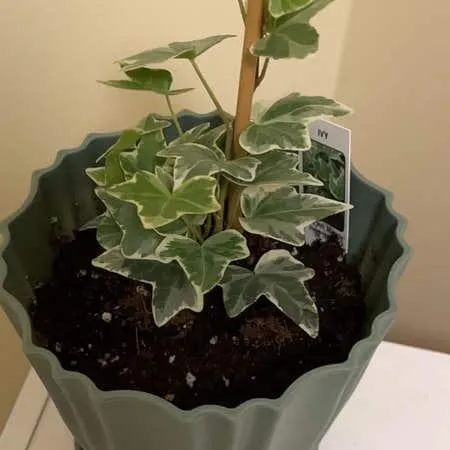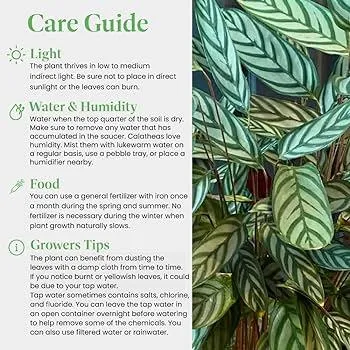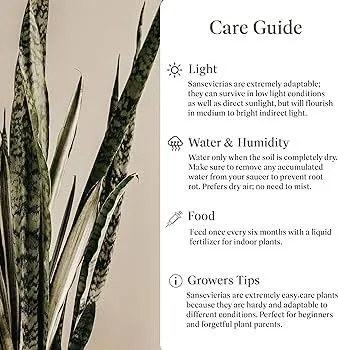A Comprehensive Guide to Caring for English Ivy
English ivy is one of the most popular houseplants thanks to its ability to thrive even in low-light conditions. But maintaining this vigorous climber plant requires some know-how. In this in-depth guide, I’ll cover all the basics of English ivy care as well as some tips and tricks I’ve learned from my own experience growing this plant. By the end, you’ll have everything you need to keep your ivy lush and leafy for years to come.
Watering English Ivy
Proper watering is key to a healthy ivy plant. As a rule of thumb, English ivy prefers moist soil but should never sit in soggy conditions. The basic watering schedule is to allow the top inch of soil to dry out between waterings. In warmer months, you may need to water every 5-7 days but cut back to every 10-14 days in cooler weather.
From my experience, under-watering is safer than over-watering when it comes to ivy. Soggy soil can cause root rot, which is essentially a death sentence. I once overwatered my ivy out of careless habit and lost the whole plant. Now I check the soil before watering and only give a thorough drink when it’s partially dried out.
Potting and Repotting English Ivy
As an aggressive grower, ivy will need repotting every couple years to accommodate its expanding root system. Here are some tips:
- Use a well-draining potting mix formulated for houseplants.
- Repot into a container just 1-2 inches larger than the current pot.
- Trim back any circling roots before replanting.
- Water thoroughly after repotting and allow the soil to partially dry between waterings as the roots establish.
It’s better to repot ivy when it’s actively growing in spring or summer. Give it some time to adjust before resuming normal care. I like to wait until new growth appears at least an inch long before disturbing the roots.
Light Requirements for English Ivy
While ivy thrives in low light, it will climb and spread more vigorously with at least partial sun each day. It tolerates bright indirect light best. Place your ivy near an east or west-facing window to catch morning or afternoon rays.
You may see leggy growth in very low light, so rotate the plant weekly to prevent lean. Cut these long stems back to encourage bushier form. I once kept an ivy in a basement with barely any sunlight – talk about leggy! It looked pathetic until I moved it upstairs.

Fertilizing English Ivy
Feed your ivy weekly during the growing season (spring through fall) with a water-soluble houseplant fertilizer diluted to 1/2 or 1/4 the recommended strength on the label. Ivy enjoys nutrients but sensitive to over-fertilizing which can damage roots.
In winter when growth slows, you can reduce feeding to once a month. I like to give my ivy a nutrient boost in fall before the dormant season so it comes back strong in spring. Proper nutrition keeps foliage thick and plant thriving overall.
Pruning and Training English Ivy
With its tendency to climb and spread, ivy benefits from some light pruning and training. Here are a few tips:
- Pinch back new growth tips to encourage bushy form rather than long vines.
- Use plant ties or stakes to guide juvenile stems up poles or trellises for an artistic effect.
- Prune off leggy or scraggly parts to maintain a neat shape.
- Trim back any foliage that touches the soil to prevent rot.
Ivy certainly has a mind of its own, sort of like a naughty pet! With guidance though, you can coax it into attractive displays. Prune after flowering seasons in spring and fall.
Dealing with Pests on English Ivy
The main pests to watch for on ivy are spider mites, scale, and mealybugs. Check leaves regularly and address infestations early. Here are some natural solutions:
– Spider mites hate humid environments, so mist foliage often or set the plant on a pebble tray with water.
– Wipe scales and mealybugs away with cotton balls dipped in rubbing alcohol.
– Neem oil spray suffocates many soft-bodied pests.
– Insecticidal soap spray kills on contact when used as directed.
As with diseases, prevention is key. Keep stress levels low by avoiding drafty spots and providing consistent care. Quarantine new plants before introducing them as pests can hitchhike. With some precautions like these, I rarely battle major issues on my ivy.

Dealing with Diseases of English Ivy
Major plant diseases to watch out for include root rot, leaf spot, and powdery mildew. Here are tips for prevention and treatment:
– Practice good sanitation and prune off any diseased parts.
– Water properly and provide good airflow/light exposure to reduce chances of rot or fungi.
– Neem oil can help control mild cases of powdery mildew organically.
– If issues persist, try a copper fungicide labeled for houseplants.
As they say, an ounce of prevention is worth a pound of cure – being vigilant about care habits goes a long way in keeping ivy diseases at bay. Isolate newly purchased plants as a precaution too. With patience and TLC, you can bounce back from minor issues.
Dealing with Ivy That’s Too Vigorous
Left to its own devices, English ivy can become too aggressive. Here are some tips to tame an overly vigorous plant:
– Pinch growing tips back often to promote bushy habit over rampant vines.
– Regularly prune longer stems and train new growth upwards.
– Repot less frequently to somewhat limit root growth potential.
– Fertilize sparingly – too many nutrients spur rampant top growth.
– Overwinter ivy in a slightly cooler spot with diminished light.
I once failed to contain an ivy that took over an entire room! It’s best to stay one step ahead by proactively shaping and containing the plant before it gets out of hand. With some diligence, you can enjoy ivy’s vining charm responsibly.
Propagating English Ivy
Wondering how to expand your ivy collection? This plant propagates very easily from stem cuttings. Here’s the basic method:

– Take 4-6 inch cuttings from healthy, flexible new growth in spring or summer.
– Remove lower leaves and dip cut end in rooting hormone if desired.
– Plant cuttings about 1/3 deep in a potting mix specifically formulated to enhance rooting.
– Keep soil lightly moist and cuttings in bright, warm spot with high humidity.
– Within a few weeks to months, you should see roots emerge. Then transplant new ivy plants!
It’s honestly kind of fun to make more ivy “babies” this way. Just be careful not to let propagated ivy get out of control like its parent plant. Before you know it, you’ll have ivy coasters all over your home!
In summary, English ivy provides an attractive vine for any indoor setting. Its low light needs are a major plus for many homes and offices. With the right care techniques, your ivy will thrive for years to come. Let me know if you have any other questions! Happy planting.
English Ivy Care Tips
| Watering | Water when the soil is dry 1 inch deep. English ivy does not like soggy soil. |
|---|---|
| Sunlight | English ivy grows well in medium to low light. It tolerates some direct sun but prefers morning sun or shade. |
| Pruning | Prune long stems or vines to keep the ivy bushy. Cut back by one third in spring to encourage new growth. |
| Fertilizer | Fertilize in spring and summer with a balanced houseplant fertilizer diluted to half strength every 2-4 weeks. |
| Repotting | Repot every 2-3 years in early spring in a nursery pot with drainage holes and a potting mix for houseplants. |
| Temperature | English ivy thrives at indoor temperatures between 60-75°F. It can tolerate brief drops to 50°F. |
FAQ
-
How much sun does English ivy need?
English ivy grows best in partial shade or full sun. It can tolerate some shade, around 4 hours of direct sun each day, but it will grow faster and be healthier with at least 6 hours of sun daily. So make sure to put it in a spot getting good sunlight.
-
How often should I water English ivy?
English ivy needs consistently moist soil but not soggy or swampy. Water it when the top inch of soil feels dry. In the summer, you may need to water every few days, but less is fine in the cooler months when the plant isn’t growing as fast. The key is watching the soil – don’t have a set schedule but water whenever it looks dry. Overwatering can damage the roots.
-
What kind of soil does English ivy need?
A rich, well-draining potting mix is best for English ivy. It prefers soil that stays moist but drains well so the roots don’t sit in water. A mix of 1 part potting soil, 1 part peat moss or compost, and 1 part perlite or coarse sand works great. This allows water to pass through without becoming soggy. You can also add some organic matter like compost to improve drainage and nutrient levels.
-
How do I fertilize English ivy?
Fertilize English ivy in the spring and again every few months during the growing season. Use a well-balanced, water soluble houseplant fertilizer mixed at half the strength recommended on the label. You can also use a slow release pellet fertilizer inserted directly into the soil. Monitor the plant and stop fertilizing it in the fall so it can harden off before winter. Overfertilizing could damage the ivy, so stick to this routine and don’t go overboard.

-
How do I prune English ivy?
Ivy doesn’t typically need pruning but you can trim it now and then to maintain its shape if it starts to become leggy or look unruly. Cut stems back to where you see healthy foliage and new growth. Pruning indoor ivy in the winter, when it’s dormant, will encourage fuller growth and density come spring. Outdoors, prune mostly just for shaping and removing dead or diseased parts. Sharp shears work best – don’t yank or tear the stems.
-
Can English ivy be grown indoors?
Yes, English ivy thrives as a hardy houseplant. It tolerates low light and neglect fairly well, making it a good option for homes. Give it a spot with partial sun and keep the soil evenly moist. Prune now and then to maintain its size. Use a pebble tray under indoor pots to boost humidity levels for optimal growth. English ivy needs less maintenance indoors compared to many other plants. So it could be a nice choice if you’re sort of a brown thumb!
-
Are there any pests that bother English ivy?
Some pests that occasionally cause issues include spider mites, scale, and mealybugs. Watch for tiny insect dots or webbing on leaves. If infestations occur, quarantine the plant and wash leaves with a mild soap and water solution. As a preventative, brush any debris from leaves routinely. You can try neem oil or insecticidal soap sprays if needed for stubborn infestations. Luckily ivy isn’t the juiciest meal, so pests usually leave it alone – good drainage is the best defense.
